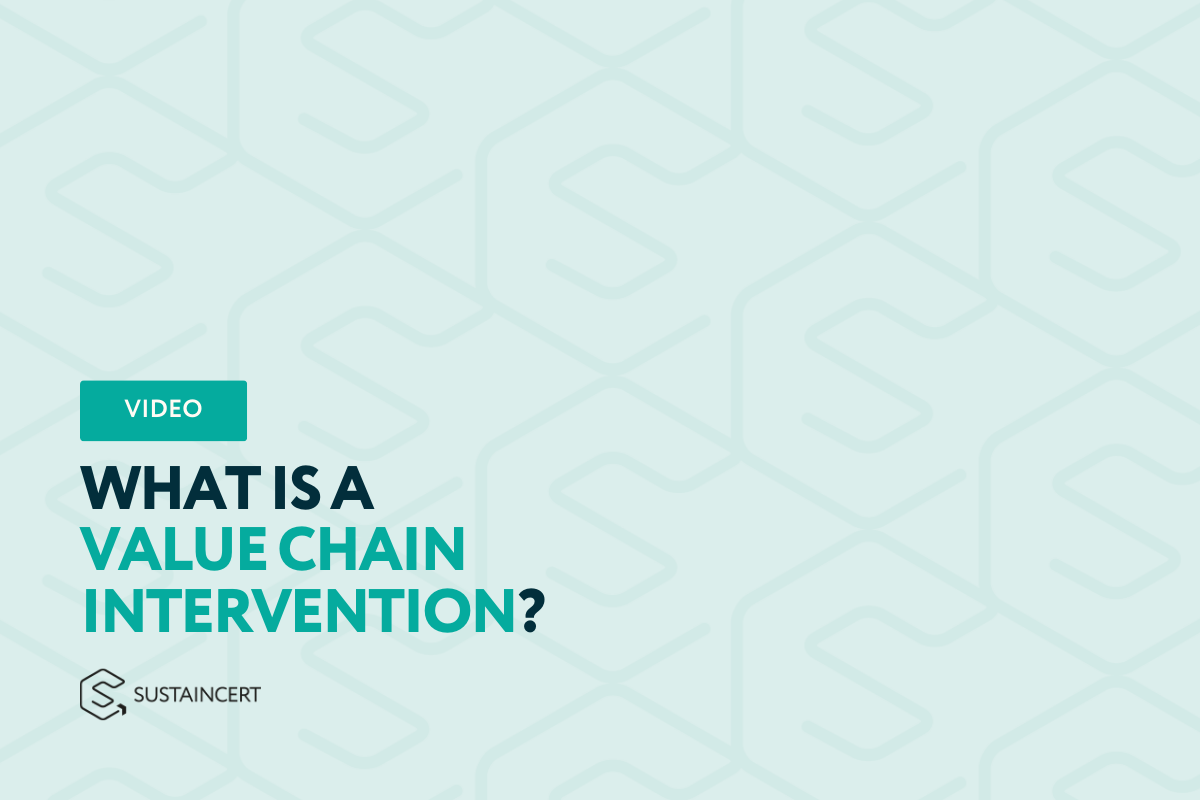
November 2023
What is a value chain intervention?
Companies are setting more ambitious climate targets, while at the same time there is an overall lack of guidance on how to tackle Scope 3 emissions reductions. There’s a long path from a cocoa tree to a chocolate bar, so gaining full visibility and traceability over the entire value chain in dynamic sectors like food and agriculture is challenging.
So, in a context where traceability is limited, what can companies do to reduce or remove emissions in their value chain? And how can they account for the impact achieved? In this context, concepts such as value chain interventions, Supply Shed and causality can play a key role.
Read on or watch Denise Welch, Senior Climate Specialist at SustainCERT to learn more about interventions.

What is a value chain intervention?
A value chain intervention is defined by the Value Change Initiative Guidance (Value Chain Interventions – Greenhouse gas accounting & reporting guidance version 1.1) as any action that introduces a change to a Scope 3 activity, such as a new technology, practice or supply change, to reduce or remove emissions. An Intervention may also include changes to several activities that reduce or sequester emissions in different ways.
What are examples of interventions?
A technological intervention makes a new technology available in the supply chain. For example, a company that produces shea butter can invest in replacing traditional open fire woodstoves for shea nut processing with cleaner burning cookstoves. This would result in Scope 3 emissions reductions that could be claimed by the company in its Scope 3 reporting.
Meanwhile, an intervention addressing practices changes the way certain processes are conducted in the supply chain. For example, an agricultural company could move to cover cropping on some of the upstream farms that supply their produce. This would result in emission removals as cover crops sequester CO2, which the company could then claim in its Scope 3 reporting.
Looking to verify and report on value chain interventions?
SustainCERT's value chain services allow companies to credibly report on their value chain decarbonization efforts.

